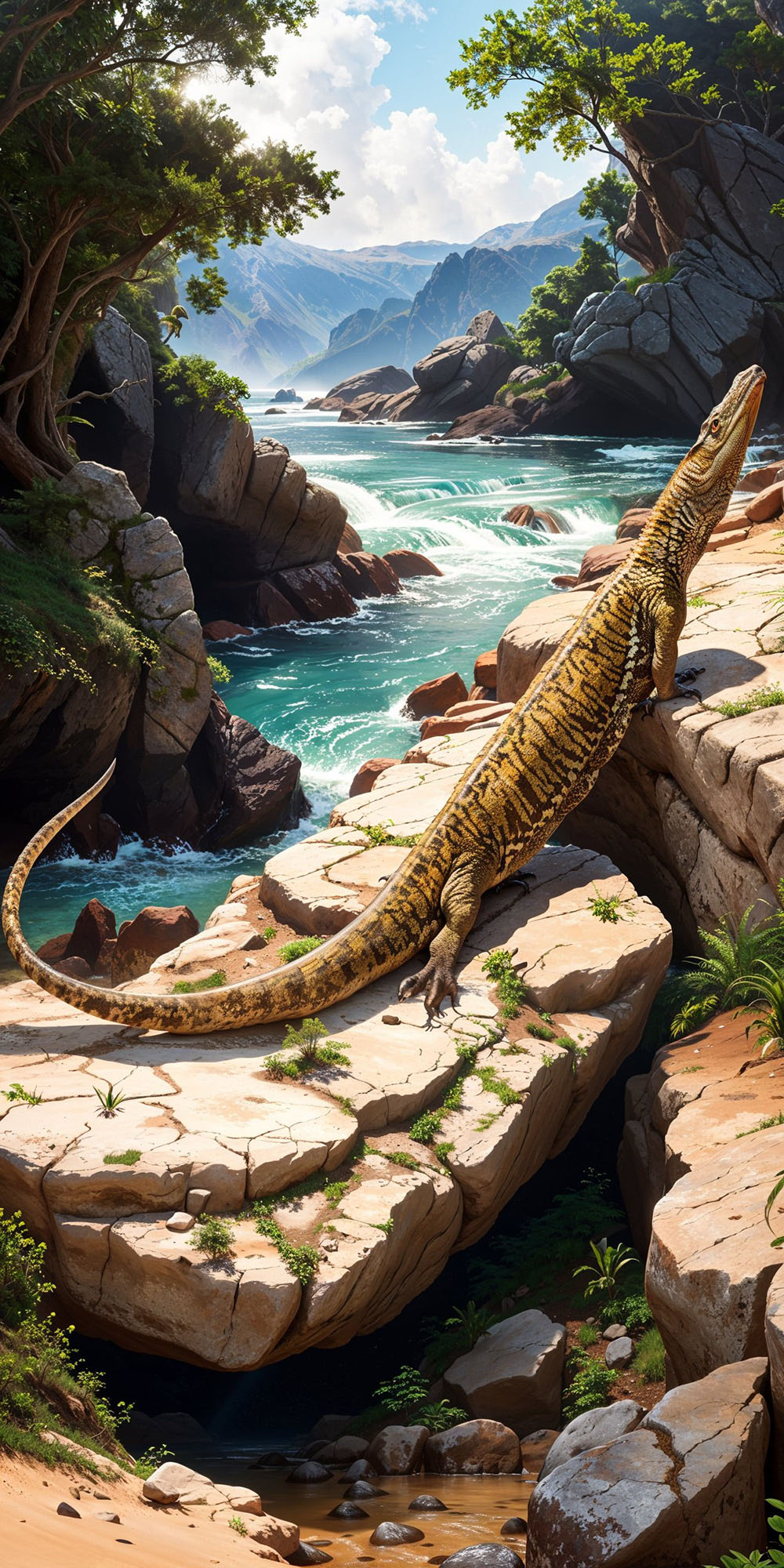The Aigialosaurus
The Aigialosaurus, also known as the "coastal lizard," was a marine reptile that lived during the early Cretaceous period. It had a long, slender body with paddle-like limbs, allowing it to move gracefully through the water. This carnivorous animal had sharp teeth for catching fish and other small marine creatures.

| Aigialosaurus | |
|---|---|
| Size | Approximately 6 feet (1.8 meters) |
| Weight | Around 50 pounds (23 kilograms) |
| Speed | 15-20mph (24-32km/h) |
| Key Strength | Swimming Speed |
| Biggest Weakness | Vulnerable on land |
| Scientific Name | Aigialosaurus |
| Family | Mosasauridae |
| Habitat | Marine |
| Geography | Late Cretaceous Oceans |
| Diet | Fish |
| Lifespan | 10 years - 15 years |

The Aigialosaurus
The Aigialosaurus, also known as the "coastal lizard," was a marine reptile that lived during the early Cretaceous period. It had a long, slender body with paddle-like limbs, allowing it to move gracefully through the water. This carnivorous animal had sharp teeth for catching fish and other small marine creatures.
Fun Fact: Aigialosaurus was not actually a dinosaur but a type of marine reptile that lived at the same time.
| Aigialosaurus | |
|---|---|
| Size | Approximately 6 feet (1.8 meters) |
| Weight | Around 50 pounds (23 kilograms) |
| Speed | 15-20mph (24-32km/h) |
| Key Strength | Swimming Speed |
| Biggest Weakness | Vulnerable on land |
| Scientific Name | Aigialosaurus |
| Family | Mosasauridae |
| Habitat | Marine |
| Geography | Late Cretaceous Oceans |
| Diet | Fish |
| Lifespan | 10 years - 15 years |
Aigialosaurus Matchups
We use AI to simulate matchups between the Aigialosaurus and other animals. Our simulation considers size, strength, and natural predatory behaviors to determine the most likely outcome.
Aigialosaurus: Diet, Predators, Aggression, and Defensive Behaviors
What did Aigialosaurus eat?
Aigialosaurus were carnivorous reptiles that primarily fed on small fish, crustaceans, and other aquatic invertebrates. They were well-adapted to hunting underwater, using their agility and sharp teeth to catch their prey.
Did Aigialosaurus have any predators?
As adults, Aigialosaurus were relatively small and agile reptiles, making them vulnerable to larger predators such as marine reptiles or larger fish. However, their ability to swim quickly and their camouflage could help them evade potential threats.
Were Aigialosaurus aggressive?
Aigialosaurus were not known to be particularly aggressive towards humans or other animals. They were mostly solitary creatures and preferred to avoid confrontation whenever possible. However, they might have become defensive if they felt threatened.
Did Aigialosaurus fight?
Aigialosaurus were not known to engage in physical fights with other animals of their kind. They were more likely to rely on their speed and agility to evade potential threats rather than resorting to combat.
How did Aigialosaurus defend themselves?
When threatened, Aigialosaurus may have used their sharp teeth as a form of defense. They could also rely on their speed and agility to escape from predators or other dangers in their environment. Additionally, their ability to blend in with their surroundings could have helped them avoid detection.
What was Aigialosaurus's biggest weakness in a fight?
Despite their speed and agility, Aigialosaurus may have struggled against larger predators that could overpower them with sheer size and strength. Their relatively small size and lack of formidable defensive adaptations could have put them at a disadvantage in a physical confrontation with a much larger opponent.
Fun Fact: Despite its name meaning "coastal lizard," Aigialosaurus spent most of its life in the open ocean rather than near the shoreline.
Fun Fact: Aigialosaurus is believed to have been an excellent swimmer, using its streamlined body and paddle-like limbs to navigate the waters with ease.










